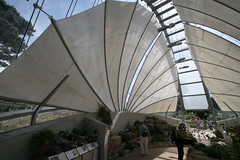To make it suitable for those whose logical years start at other times I've made two variants.
Academic Year 2008-9 - Template
- This runs from September to August. It's in Excel-2003 format.
General (any) Starting Date - Template
- It allows you to put in any starting date that you wish and produces a full year's calendar starting from that date.
- This allows you, for instance, to pick either a Sunday or Monday and any week of the year as a starting point.
- This works well ONLY in Office-2007 (it loses formatting in Office-2003).
- It uses conditional formatting and some vaguely fancy formulae so the sheets are "protected", but there's no password so anybody can modify them to suit themselves.
- The Holidays are entered in a separate (non-printing) table on the same page and are automatically put in the calendar. Note that if they belong in the line that has the month name they're pushed to the next line.
8/30/2008 Updated to make the holidays appear "automatically" in the printed calendar.
If you want to see a discussion of what I did I explained it in DonationCoder's forum.
10/21/2008 Ellis Godard has updated my version to allow you to choose the start and end dates to make a "truly compact calendar". - Nice.

